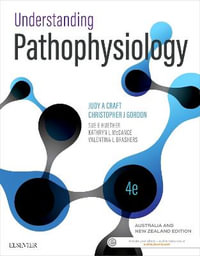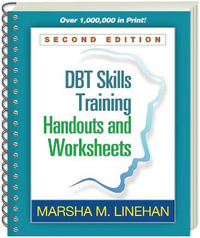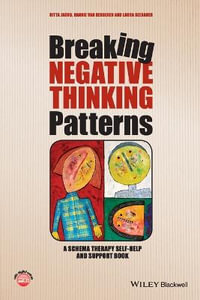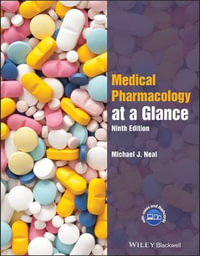
Stimuli-Responsive Materials for Tissue Engineering
By: Clarisse Ribeiro (Editor), Unai Silvan (Editor), Senentxu Lanceros-Mendez (Editor)
Hardcover | 22 January 2025
At a Glance
384 Pages
24.4 x 17.0
Hardcover
RRP $276.95
$163.40
41%OFF
or 4 interest-free payments of $40.85 with
orAvailable: 22nd January 2025
Preorder. Will ship when available.
Enables advanced tissue regeneration approaches via expertise from the fields of materials science and biology
Stimuli-Responsive Materials for Tissue Engineering comprehensively reviews the use of stimuli-responsive materials in the context of advanced tissue engineering approaches, highlighting applications, challenges, and solutions and reporting on the current state of the art of smart and multifunctional materials being used for tissue engineering, focusing on material types and their properties.
The progress that has already been achieved in the field is put into perspective by covering the remaining challenges in the research field of tissue engineering, and solutions are outlined to overcome those. By addressing challenges and ways to overcome them, Stimuli-Responsive Materials for Tissue Engineering is a highly practical resource on advanced tissue regeneration.
Stimuli-Responsive Materials for Tissue Engineering contains information on:
- Smart and multifunctional materials for tissue engineering, covering electroactive and magnetoactive materials
- Shape memory, photo-responsive, and controlled degradation of stimuli-responsive materials
- Tissue regeneration strategies based on smart and active biomaterials, covering bone, heart, and neural tissue regeneration
- Main applications where these biomaterials can be applied, such as in bone, muscle, and skin regeneration
- Other potential areas where the covered biomaterials are expected to make a major impact in the next decade
With comprehensive coverage of the subject, Stimuli-Responsive Materials for Tissue Engineering is an essential resource for materials scientists, bioengineers, engineering scientists, and biotechnologists seeking to understand advanced tissue regeneration approaches, current challenges, and potential solutions to advance progress in the field.
Preface xi
Part I
Smart and Multifunctional Materials for Tissue Engineering 1
1 Electroactive Materials for Tissue Engineering 3
Teresa Marques-Almeida, Estela O. Carvalho, Unai Silvan, Senentxu Lanceros-Mendez, and Clarisse Ribeiro
1.1 Introduction 3
1.2 Relevance of the Electrical Signals in the Human Body 4
1.3 Relevance of the Electrical Signals in Cell Processes 7
1.4 Types of Electroactive Materials 10
1.4.1 Conductive Materials 10
1.4.2 Piezoelectric Materials 12
1.4.3 Magnetoelectric Materials 14
1.4.4 Thermoelectric Materials 15
1.5 Relevance of the Material’s Architecture 17
1.5.1 Films 17
1.5.2 Electrospun fibers 19
1.5.3 3D Porous Scaffolds 20
1.5.4 Hydrogels 21
1.6 Final Remarks 22
Acknowledgments 22
References 22
2 Piezoelectric, Triboelectric and Magnetoactive materials for Tissue Engineering 35
Pratap N. Soni and Dipankar Mandal
2.1 Introduction 35
2.1.1 Working Principle 36
2.1.1.1 Piezoelectric 36
2.1.1.2 Triboelectric 39
2.1.1.3 Magnetoactive 42
2.2 Piezoelectric, Triboelectric, and Magnetoactive Materials in Tissue Engineering 43
2.2.1 Piezoelectric Materials in Tissue Engineering 45
2.2.2 Triboelectric Materials in Tissue Engineering 60
2.2.3 Magnetoactive Materials in Tissue Engineering 69
2.3 Summary and Conclusion 74
References 76
3 Shape-memory Polymers for Tissue Engineering Applications 91
Fangyuan Zheng, Ane Garcia-Garcia, Isabel Moreno-Benitez, Leire Ruiz-Rubio, Leyre Perez-Alvarez, and Jose L. Vilas-Vilela
3.1 Introduction 91
3.2 Shape-memory Effect in Polymers 93
3.3 Shape-memory Mechanism and Molecular Structure 95
3.3.1 SMPs Based on Phase Transitions 97
3.3.2 SMPs Based on Supramolecular Interactions 98
3.3.3 SMPs Based on Dynamic Interactions 99
3.4 SMP Triggered by Stimuli Different to Temperature 100
3.4.1 Photo-triggered SMPs 101
3.4.2 Solvent and Other Triggers of SMPs 102
3.5 Requirements of SMPs as Scaffolds 104
3.5.1 Biocompatibility 105
3.5.2 Mechanical Properties 105
3.5.3 Biodegradability 106
3.5.4 Porosity 107
3.5.5 Sterilizability 108
3.5.6 Motion Requirement 109
3.6 Tissues-Specific Requirements 110
3.6.1 Bone Tissues 110
3.6.2 Cardiovascular Tissues 111
3.6.3 Cartilage Tissues 112
3.6.4 Neural Tissue 112
3.7 Shape-memory Homopolymers and Copolymers for Tissue Engineering 113
3.8 Shape-memory Composites for Tissue Engineering 121
3.9 Shape-memory Hydrogels for Tissue Engineering Applications 129
3.10 Conclusions and Future Trends 133
References 135
4 Photoresponsive Materials for Tissue Engineering 149
Mikel Rincon-Iglesias, Cristian Mendes-Felipe, Senentxu Lanceros-Mendez, and Javier Reguera
4.1 Introduction 149
4.2 Photoisomerizable Materials 151
4.3 Photopolymerizable Materials 154
4.4 Photocleavable Materials 158
4.5 Photothermal Materials 163
4.6 Conclusions and Outlook 167
Acknowledgments 168
References 168
5 Controlled Degradation of Stimuli-Responsive Materials for Tissue Engineering 181
Teresa Carranza, Ainhoa Irastorza, Ander Izeta, Pedro Guerrero, Koro de la Caba, and Alaitz Etxabide
5.1 Introduction 181
5.2 Degradation Mechanisms 183
5.2.1 Biological-Activity-Mediated Degradation 183
5.2.2 Chemical Degradation 186
5.2.3 Physical Degradation 189
5.3 Degradation Measurement Techniques 191
5.3.1 Characterization of the Degradation Process In Vitro 191
5.3.2 Characterization of the Degradation Process In Vivo 194
5.3.3 Characterization of Degradation Products 196
5.3.3.1 Identification and Quantification of Degradation Products In Vitro 196
5.3.3.2 Cytotoxicity Evaluation In Vitro 197
5.3.3.3 Toxicokinetic Studies In Vivo 198
5.3.3.4 Local Effects after Implantation 199
5.4 Conclusions and Future Perceptions 200
References 201
Part II Tissue Regeneration Strategies Based on Smart and Active Biomaterials 211
6 Active Biomaterials for Bone Tissue Regeneration 213
Martina Marcotulli, Lucia Iafrate, Efsun Senturk, Andrada Pica, Franco Marinozzi, Fabiano Bini, Giancarlo Ruocco, Chiara Scognamiglio, and Gianluca Cidonio
6.1 Introduction 213
6.2 Ultrasound-Based Strategies for the Engineering of Biomaterials for Bone Regeneration 214
6.2.1 Ultrasound in Regenerative Medicine 214
6.2.2 Bioeffects Induced by US 215
6.2.2.1 Differentiation 215
6.2.2.2 Proliferation 217
6.2.2.3 Migration 217
6.2.3 US-stimulated Biomaterials for Tissue Engineering Applications 217
6.2.3.1 Acoustofluidics 218
6.2.3.2 US-triggered Release of Drugs 219
6.2.3.3 US-triggered Piezoelectric Biomaterials 220
6.2.3.4 US-assisted Synthesis 220
6.2.4 Future Development for US-driven Bone Regeneration 221
6.3 Magnetic Forces to Assist Biomaterials in Bone Formation 221
6.3.1 Magnetic Materials in Regenerative Medicine 221
6.3.1.1 Magnetic Fields 222
6.3.1.2 Magnetic Materials 222
6.3.1.3 Biosafety of Magnetic Forces 222
6.3.2 Production and Activation of Magnetic Biomaterials 223
6.3.3 Magnetic Stimulation of Biomaterials 223
6.3.3.1 Magnetism and Electricity Correlation on Bone Healing 223
6.3.3.2 Magnetic Hyperthermia 224
6.3.4 Magnetically Induced Effects in Bone Tissues 224
6.3.4.1 Magnetic to Mechanical Cell Stimulation 224
6.3.4.2 Targeted Release of Growth Factors or Drugs 225
6.3.5 Harnessing Magnetic Biomaterials to Tackle Bone Regeneration 226
6.3.5.1 Bone Fractures Healing by Magnetic Biomaterials 226
6.3.5.2 Magnetic Therapy for Osteoporosis 226
6.3.5.3 Magnetic-based Treatments for Bone Cancer 226
6.3.6 Future Perspectives for Magnetic Stimuli of Bone Repair 227
6.4 Piezoelectric Materials as Biomimetic Substrate for Skeletal Engineering 227
6.4.1 Bone is a Piezoelectric Material 227
6.4.2 Collagen Fibrils and the Role in Bone Piezoelectric Behavior 228
6.4.3 Biomimetic Bone Piezomaterials 229
6.4.4 New Approaches Harnessing Piezoelectric Behavior of Skeletal Tissue 231
6.4.5 Future Outlook of Piezoelectric Bioactive Skeletal Materials 232
References 233
7 Muscle and Heart Tissue Regeneration Based on Stimuli-Responsive Materials 247
Sylvie Ribeiro, Clarisse Ribeiro, and Senentxu Lanceros Mendez
7.1 Introduction 247
7.2 Skeletal and Cardiac Muscle Organization 248
7.2.1 Skeletal Muscle Tissue 248
7.2.1.1 The Anatomy of the Vasculature in Skeletal Muscle 250
7.2.1.2 Nerve Supply in Skeletal Muscle 251
7.2.2 Cardiac Muscle Tissue 252
7.2.2.1 Other Relevant Components of Cardiac Tissue 253
7.3 Stimuli-Responsive Materials for Muscle Tissue Engineering 254
7.3.1 External Regulated Stimuli-Responsive Materials in Muscle Tissue Regeneration 256
7.3.1.1 Temperature-Responsive Materials 256
7.3.1.2 Light-Responsive Materials 257
7.3.1.3 Electro-Responsive Materials 258
7.3.1.4 Ultrasound Stimuli-Responsive Materials 261
7.3.1.5 Magnetic Stimuli-Responsive Materials 262
7.3.2 Internally Regulated Stimuli-Responsive Materials for Muscle Tissue Regeneration 264
7.3.2.1 Redox-Responsive Materials 264
7.3.2.2 pH-Responsive Materials 265
7.4 Conclusions and Future Perspectives 268
Acknowledgments 268
References 269
8 Neural Tissue Regeneration Based on Stimuli-Responsive Materials 277
Tiffany S. Pinho, Belem Sampaio-Marques, Clarisse Ribeiro, Cristiana B. Cunha, Senentxu Lanceros-Mendez, and Antonio J. Salgado
8.1 Introduction 277
8.2 Electroactive Smart Polymers: An Overview 279
8.3 Electroactive Smart Polymers for In Vitro Neuronal Outgrowth and Differentiation 280
8.3.1 Electrically Conductive Materials 280
8.3.2 Piezoelectric Polymers 282
8.3.3 Ionic Conductive Polymers 283
8.4 Electroactive Smart Polymers as a Regenerative Approach for Neural Regeneration In Vivo 285
8.4.1 Spinal Cord Injury 285
8.4.2 Brain Injury 287
8.5 Major Challenges and Future Directions 290
8.6 Final Remarks 290
References 291
9 Skin Tissue Regeneration Based on Stimuli-Responsive Materials 303
Igor Irastorza, Beatriz Jimenez-Leiva, Gaskon Ibarretxe, Lucia Jimenez-Rojo, Clarisse Ribeiro, Senentxu Lanceros-Mendez, and Unai Silvan
9.1 Introduction 303
9.2 Structural Organization of the Skin 303
9.3 Physiology of Wound Healing 308
9.3.1 Hemostasis 309
9.3.2 Inflammatory Phase 309
9.3.3 Proliferation Phase 310
9.3.4 Wound Remodeling and Contraction 310
9.4 Biomaterials for Skin Regeneration 311
9.4.1 Biomaterial Requirements for Skin Regeneration 311
9.4.1.1 Biocompatibility 311
9.4.1.2 Scaffold Architecture 311
9.4.1.3 Biodegradability 312
9.4.1.4 Porosity 313
9.4.1.5 Functionalization with Bioactive Molecules 313
9.4.1.6 Mechanical Properties 313
9.4.1.7 Surface Wettability, Water Uptake, and Vapor Transmission 314
9.5 Stimuli-responsive Materials 314
9.5.1 Endogenous Triggers 314
9.5.1.1 pH 314
9.5.1.2 Temperature 315
9.5.1.3 Redox Potential 315
9.5.1.4 Mechanical Stress 316
9.5.2 Exogenous Triggers 317
9.5.2.1 Light 317
9.5.2.2 Ultrasound 317
9.5.2.3 Magnetic Fields 318
9.6 Future Perspectives 319
Acknowledgments 319
References 319
10 Cancer Therapies Based on Stimuli-Responsive Materials 329
Giuliana Mosconi, Micaela A. Macchione, and Marcelo R. Romero
10.1 A Brief Review 329
10.2 Chemotherapy and the Role Played by Stimuli-Responsive Materials 330
10.3 Stimuli Types and Targeting 331
10.3.1 Stimuli Based on pH 332
10.3.2 Redox Stimuli 334
10.3.3 Enzyme-Responsive Materials 334
10.3.4 UV–Visible—Photodynamic Therapy 337
10.3.5 NIR and Microwave Radiation—Photothermal Therapy and Temperature/Light-Trigger Chemotherapy 339
10.3.6 NIR and Microwave Radiation—Thermo-responsive Polymers 339
10.3.7 Ultrasound Waves 342
10.3.8 Magnetic Fields and Magnetic Materials 344
10.3.9 Neutron Beams and Specific-responsive Materials 344
10.3.10 Others: Multi-responsive Systems 346
10.4 Concluding Remarks and Perspectives 346
Acknowledgments 346
References 347
Summary and Outlook 351
Clarisse Ribeiro, Unai Silvan, and Senentxu Lanceros-Mendez
Acknowledgments 353
Index 355
ISBN: 9783527350476
ISBN-10: 3527350470
Available: 22nd January 2025
Format: Hardcover
Language: English
Number of Pages: 384
Audience: Professional and Scholarly
Publisher: Wiley-VCH
Country of Publication: DE
Dimensions (cm): 24.4 x 17.0
Shipping
| Standard Shipping | Express Shipping | |
|---|---|---|
| Metro postcodes: | $9.99 | $14.95 |
| Regional postcodes: | $9.99 | $14.95 |
| Rural postcodes: | $9.99 | $14.95 |
How to return your order
At Booktopia, we offer hassle-free returns in accordance with our returns policy. If you wish to return an item, please get in touch with Booktopia Customer Care.
Additional postage charges may be applicable.
Defective items
If there is a problem with any of the items received for your order then the Booktopia Customer Care team is ready to assist you.
For more info please visit our Help Centre.
You Can Find This Book In

When A Loved One Won't Seek Mental Health Treatment
How to Promote Recovery and Reclaim Your Family's Well-Being
Paperback
RRP $42.99
$21.25
OFF

Trauma-Focused ACT
A Practitioner's Guide to Working with Mind, Body, and Emotion Using Acceptance and Commitment Therapy
Paperback
RRP $113.95
$71.90
OFF

Australia and New Zealand McKenna's Drug Handbook for Nursing and Midwifery
Australia and New Zealand 9th edition
Paperback
RRP $87.95
$74.75
OFF

BLACK FRIDAY
RRP $24.99
$19.50
OFF

The Mindful Self-Compassion Workbook
A Proven Way to Accept Yourself, Build Inner Strength, and Thrive
Paperback
RRP $59.99
$42.40
OFF

Polyvagal Flip Chart
Understanding the Science of Safety (Norton Series on Interpersonal Neurobiology)
Paperback
RRP $57.95
$38.50
OFF

















